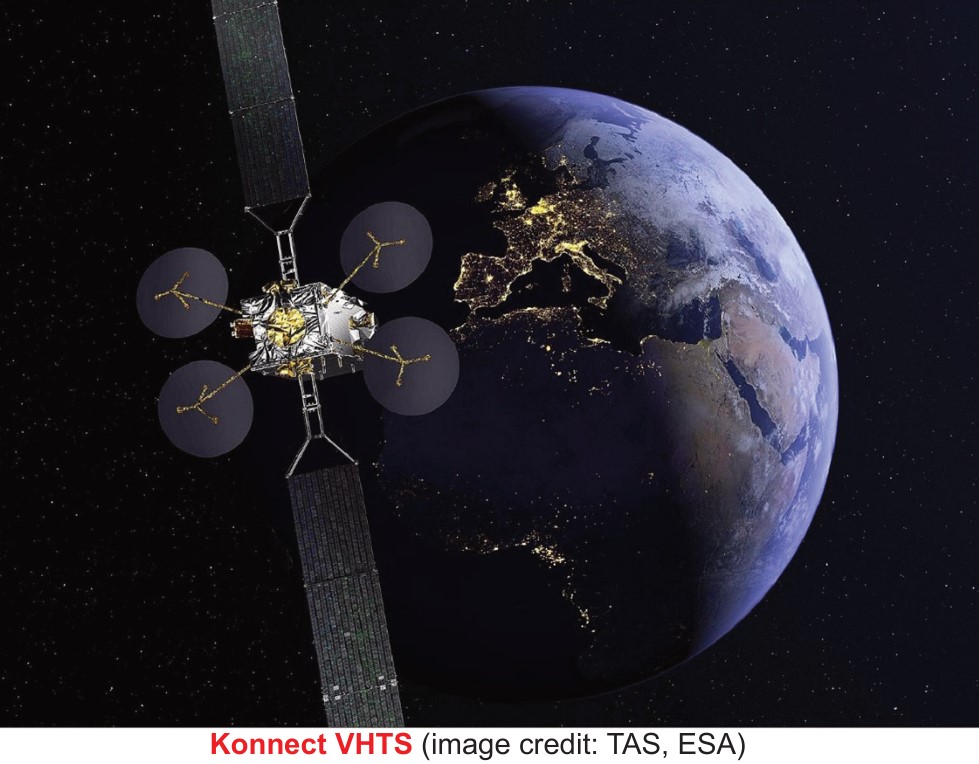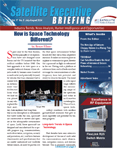GEO Satellites: Old Faithful
By Bruce Elbert
Austin, Tex., April 2, 2025 - With all of the activity and associated hype of broadband LEO constellations, one wonders if there is anything left to say about GEO satellites and applications. I chose Old Faithful, that amazing geyser in Yellowstone National Park, as the theme for this article because it, like dependable geostationary platforms, can be relied upon to simply do its thing. Old Faithful is powered by natural causes much the way that a GEO converts sunlight into dependable services to and by fixed positions on the earth. It’s like man-made bridges such as Hells Gate in New York or the Golden Gate in San Francisco: little maintenance is needed, and for a GEO, orbital operations are the simplest of space missions.
GEO platforms are built with redundancy and multiple ways of control, in contrast to simple LEO vehicles that collectively provide reliability. Communications payloads are designed for high RF power, wide bandwidths and long life, e.g., once the satellite is in operation it can be expected to deliver for up to 20 years. It’s my experience that a GEO satellite in service with a customer base is a quality investment like a gas pipeline or airliner.
 |
In a previous article here on Satellite Executive Breifing (Multi-Orbit Challenge for Broadband Communications, November 2024), I cited technical problems with some GEO satellites owing to poor design and operating flaws. But, the bulk of GEO satellites have operated well and their performance has not declined appreciably expect for life limiting aspects like fuel remaining and solar panel power reserves. New launches can result in more power and bandwidth, the two quantities that users can employ for benefits and strategic advantage. An orbit slot is a focal point for service and as long as it is in view from the user or gateway, the service is assured. The spectrum in L- through Ka-bands has proven very effective for a wide range of applications, both fixed and mobile. We can put “lots of bandwidth” into a cheap fixed terminal, and the cost per Mbps on the biggest HTS designs is competitive with any of the current broadband LEO systems (see my previous article on this).
The only limitation is in terms of latency, but consider two things:
- Broadband is more demanded for video streaming and file transfer, neither of which is sensitive to delay; and
- GEO-based networks are the simplest to operate and troubleshoot because there are only three points to be linked as compared to a constellation with intersatellite links.
There are other features of GEO to be considered but one needs a specific application to go through the tradeoffs that produce the best approach. GEO should always be in the mix lest the best option be ignored. One scenario is for service to only one continent or country, and a pair of moderate size GEO satellites can reliability and affordably meet the need. If an NGSO constellation is considered, then more investment is needed and most of the satellites are not providing the desired services. Of course, the planned regional or national requirement may be met through committing to service from a global NGSO operator, but this sacrifices control and potential financial benefits of ownership of space segment resources.
Taking the point of reliability, you can worry that your GEO orbit slot is known to potential adversaries who can employ jamming and anti-satellite tactics to deny you this resource. But, there are still lots of uses for a dependable GEO resource that covers a hemisphere all at once. I’m sure that governments that are pursuing NGSO will still employ GEO for services that are not critical to a specific operation. On the other hand, some critical operations can benefit from the dependable over-the-horizon communications that GEO uniquely provides.
"...GEO should always be in the mix lest the best option be ignored. One scenario is for service to only one continent or country, and a pair of moderate size GEO satellites can reliability and affordably meet the need. If an NGSO constellation is considered, then more investment is needed and most of the satellites are not providing the desired services..."
Major commercial operators are experiencing a decline in GEO revenues because video is no longer the powerhouse it once was. Compounding this is that consumer broadband data is not a growth market for these operators as was hoped. More consolidation is in the offing for sure. However, many usages will depend on Old Faithful GEO as long as operators find space in their orbits for them. These include inflight broadband that several GEO operators pursue with success, and various industrial and government uses where rapid introduction of high-bandwidth is demanded. Long term, it is likely that the number of active GEO slots will fade but the ones in use will see high-performance satellite designs for new markets that may not be visible (like the geyser between eruptions) until they are.
----------------------
 Bruce Elbert is the Founder and President of Application Technology Strategy LLC (www.applicationstrategy.com). He is a satellite industry expert, communications engineer, project leader and consultant with over 50 years experience in communications and space-based systems in the public and private sectors. Areas of expertise include space segment design and operation in all orbit domains, systems architecture and engineering, ground segment systems engineering, development and operation, overall system performance improvement, and organizational development. He can be reached at: bruce@applicationstrategy.com
Bruce Elbert is the Founder and President of Application Technology Strategy LLC (www.applicationstrategy.com). He is a satellite industry expert, communications engineer, project leader and consultant with over 50 years experience in communications and space-based systems in the public and private sectors. Areas of expertise include space segment design and operation in all orbit domains, systems architecture and engineering, ground segment systems engineering, development and operation, overall system performance improvement, and organizational development. He can be reached at: bruce@applicationstrategy.com





